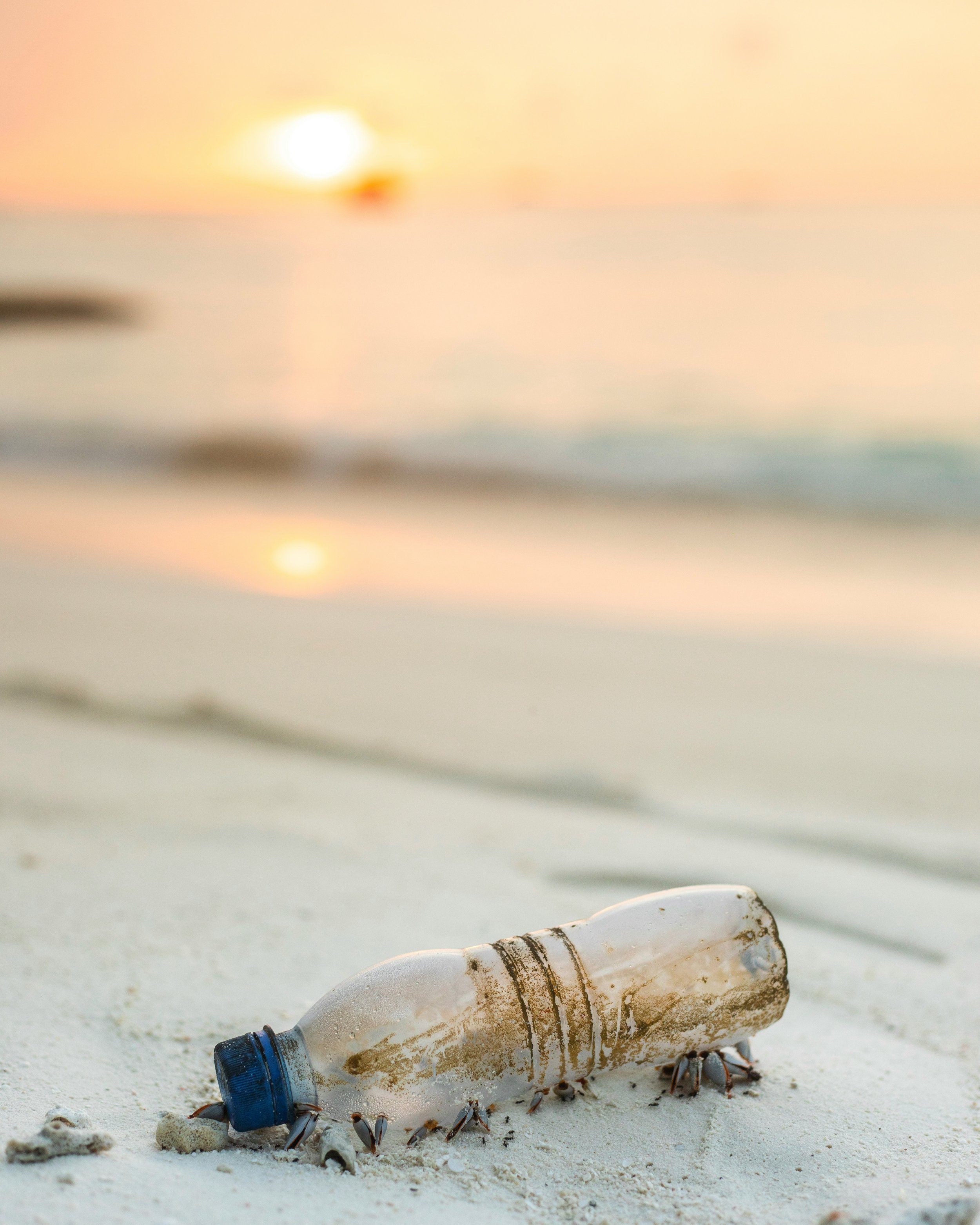What To Do With The Plastic You Can't Avoid: Embracing an Eco-Friendlier Lifestyle
In our fast-paced world, plastic is everywhere: in our shopping bags, food packaging, and even in the clothes we wear. While many of us are aware of the negative impact of plastic on the environment, it can be challenging to completely eliminate it from our lives. Instead of feeling overwhelmed, it’s more practical to focus on what we can do with the plastic we can’t avoid (at least not yet!), and choosing plastic-free alternatives when it’s possible. By learning to reuse, repurpose, upcycle, and recycle plastic, we can significantly reduce waste and contribute to a more sustainable future. Thus, I’ve written this post to help you deal with the unavoidable plastic in your life, so you can reduce your environmental footprint and live more sustainably.
UNDERSTANDING THE PLASTIC PROBLEM
The versatility and durability of plastic make it an attractive material for many products, not to mention its availability, as sometimes plastic-free alternatives aren’t easy to find. However, this same durability means that plastic can take hundreds of years to decompose. Most plastic ends up in landfills or in our oceans, causing harm to wildlife and ecosystems. Moreover, it’s not just about the many years it takes for plastic to decompose, but what happens after it does. On the one hand, when plastic decomposes, it releases potentially toxic bisphenol A (BPA), and PS oligomer, which don’t only pollute the environment, but can cause health problems in animals when ingested. On the other hand, a single plastic object will break down into millions of plastic pieces (micro and nano plastics), which harm ecosystems, wildlife, water streams, and even humans, as we end up consuming them.
So, basically, these are some of the reasons why you should care about plastic consumption and its afterlife:
Environmental Impact: Plastic pollution is a major threat to marine life and ecosystems. Animals often mistake plastic for food, leading to injury or death.
Health Concerns: Chemicals in plastics can leach into food and drinks, posing potential health risks to humans.
Future Generations: Reducing plastic waste is essential for ensuring a cleaner, healthier planet for future generations.
PRACTICAL WATS TO GIVE UNAVOIDABLE PLASTIC A SECOND CHANCE
While the ideal solution would be to eliminate plastic entirely, this is not feasible for everyone or every time. There’s a limit to the options we have as consumers, as we depend on companies have to offer, and their compromise towards sustainability. For this reason, I came up with these actionable ideas to deal with the plastic you can't avoid:
1. REUSE
Reusing items is one of the simplest and most effective ways to reduce plastic waste. You have the power to say goodbye to single-use plastic, and replace it with multi-use plastics!
Containers: Yogurt containers, jars, and plastic bottles can be cleaned and reused for storing food, organizing supplies, or even as planters.
Bags: Plastic bags from grocery shopping can be used for trash liners or to collect pet waste.
Packaging: Instead of discarding bubble wrap or packing peanuts, keep them for future use when shipping items or for storing fragile items.
2. REPURPOSE
Repurposing involves creatively finding new uses for plastic items. This can be a fun activity that engages your imagination while being eco-friendly, plus, having something useful and practical at home and knowing you created it (ego boost anyone?).
Planters: Cut plastic bottles in half and use the bottom part as a planter. This is perfect for herbs or small flowers.
Bird Feeders: Transform a large plastic bottle into a bird feeder. Cut holes for birds to access the seeds, fill it up, and hang it outside.
Storage Solutions: Use plastic containers to organize small items like buttons, screws, or craft supplies. Label them for easy access.
3. UPCYCLE
Upcycling takes repurposing to another level. It involves transforming unwanted materials into something of higher quality or value. It’s amazing how perspective and vision can create something new and better with something you might have thought about throwing away. Upcycling objects also make incredible gifts and a very fun hobby!
Furniture: Old plastic crates can be stacked and used as shelving units or side tables. You can paint them to match your décor and your style.
Bottle Caps: Glue a few plastic bottle caps together in a circular shape to create colorful and eco coasters.
Art Projects: Get creative by using plastic cutlery, bottles, and containers to create sculptures or wall art. This can be a great family project.
4. RECYCLE PROPERLY
Recycling is often the most common method people think of when dealing with plastic. However, it’s essential to understand how to recycle correctly to ensure your efforts have the maximum impact. Also, recycling should be the last step on the ‘Rs of Sustainability’ checklist, because unfortunately, not everything we place on the recycling bin will be recycled (hopefully, one day US’s recycling rate will be 100%!), in addition to the fact that recycling demands a lot of resources, which defeats the “being eco-friendlier” purpose a bit.
Know Your Plastics: Check the recycling symbols on plastic items. Many communities only accept certain types. Familiarize yourself with what can and cannot be recycled in your area.
Clean and Dry: Before recycling, make sure to rinse out containers to remove food residue. Dirty items can contaminate recycling streams.
Drop-off Locations: If curbside recycling isn’t an option, look for local drop-off centers. Some retailers also have recycling programs for specific types of plastic. I suggest checking recycling drop-off locations in your City’s website, Earth911, or TerraCycle.
5. PARTICIPATE IN COMMUNITY INITIATIVES
Joining local initiatives can amplify your efforts in managing plastic waste.
Clean-Up Drives: Participate in or organize local clean-up events. Not only do these activities help the environment, but they also raise awareness about plastic pollution. In my case, I live in Miami, so there’s tons of beach clean-ups every week in which you can volunteer to support the environment.
Workshops: Attend or host workshops on upcycling or sustainable living. Sharing knowledge and ideas can inspire others in your community.
Support Local and Sustainable Companies: Buy from businesses that prioritize sustainable practices. This helps create a market for eco-friendly products and encourages others to follow suit. These companies usually offer plastic-free alternatives to products that you never thought could ever be made plastic-free, like sponges or dental floss.
6. EDUCATE YOURSELF AND OTHERS
Knowledge is power. The more you understand about plastic and its impact, the more effectively you can make choices that reduce waste.
Research: Stay informed about the latest news and developments in sustainability, as understanding the lifecycle of plastic can motivate you to seek alternatives (I always say that spending time in nature also helps you value it more, and therefore take better care of it). Another great way of learning is watching videos or TED Talks online about sustainability and, of course, reading books on the topic. Go to your local bookstore or library and just ask for a few suggestions on sustainable reads.
Share: Talk to friends and family about your efforts to reduce plastic waste. Sharing ideas and experiences can inspire others to make changes in their own lives. Personally, I’ve found that showing sustainable products, together with some information on how plastic affects the environment, leads to action most of the times.
7. CHOOSE PLASTIC-FREE ALTERNATIVES WHEN POSSIBLE
While this post focuses on making the best out of unavoidable plastic, it’s also essential to consider alternatives when making purchases.
Bulk Buying: Purchasing items in bulk can reduce packaging waste. Bring your own containers or cotton bags to bulk stores to fill up on grains, nuts, and other yummy foods.
Eco-Friendly Brands: Look for products packaged in biodegradable/compostable materials or glass/aluminum instead of plastic. Many brands now offer sustainable options, or at least packaging made with 100% recycled plastic (this way we avoid the dreadful virgin plastics!).
DIY Solutions: For household products like cleaners or cosmetics, consider making your own using natural ingredients (and even better if you buy those in bulk). This can drastically cut down on plastic waste from packaging, as well as avoiding more toxic products that are sold at the stores.
Living an eco-friendlier lifestyle doesn’t have to be an all-or-nothing approach, especially if you’re just starting out your sustainability journey. By adopting practical strategies for managing the plastic we can’t avoid, we can make a significant difference in reducing waste. Whether it’s through reusing, repurposing, upcycling, or recycling, every small action counts.
Embrace the challenge of turning plastic waste into something valuable, creative, and practical. Not only will you be helping the environment, but you’ll also inspire those around you to join in the effort. Together, we can work towards a cleaner, greener future, one piece of plastic at a time. Remember, sustainability is a journey, and every step you take is worth celebrating! Progress over perfection, always.
If you’d like to read my future posts, please don’t forget to subscribe to my newsletter!






